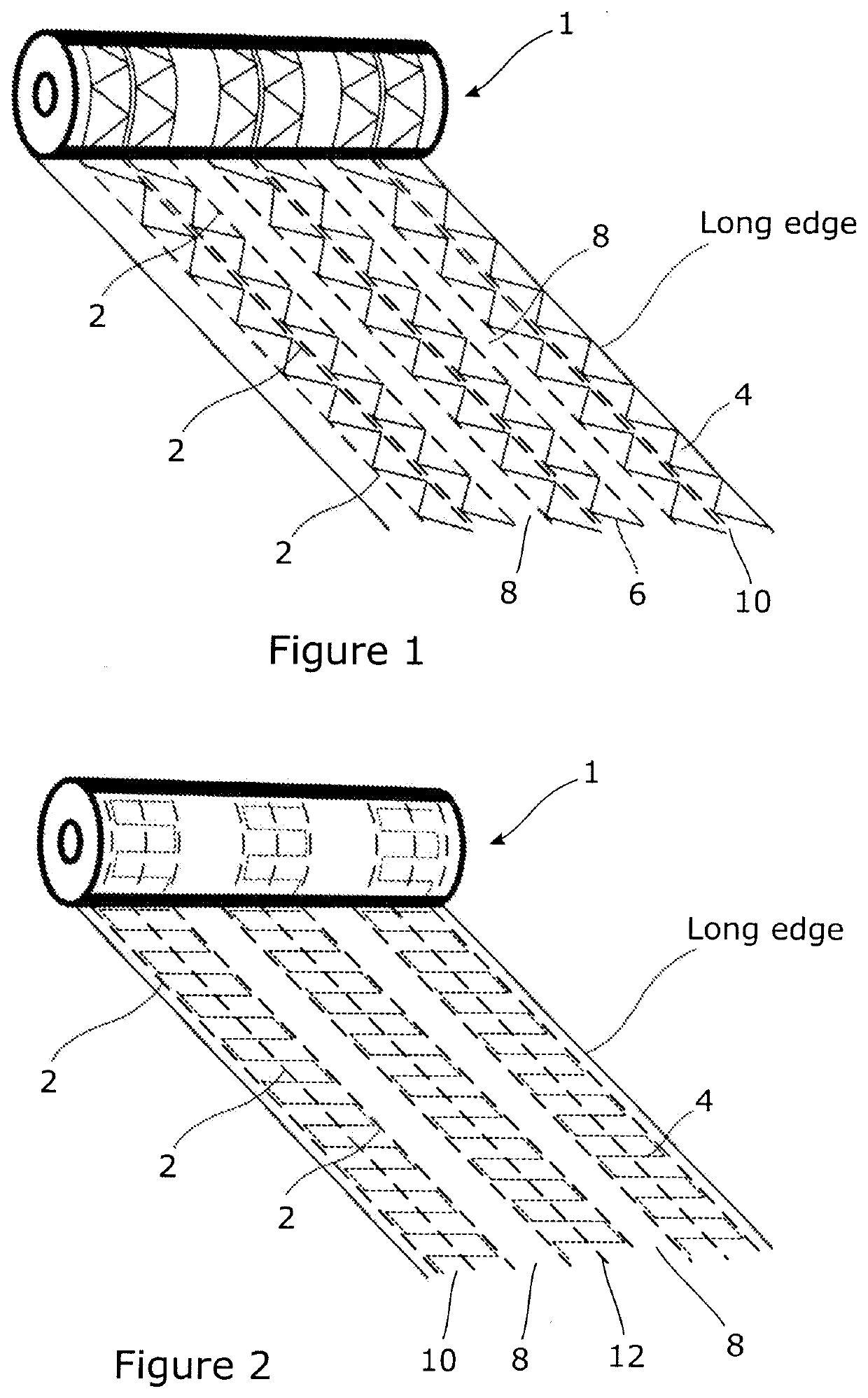Wound dressing
a wound dressing and wound technology, applied in the field of wound dressings, can solve the problems of wound and surrounding skin not being observed once, dressing fragments on removal and need to be removed, and the use of such dressings is limited to sinus or cavity wounds, etc., to achieve the effect of reducing the problem
- Summary
- Abstract
- Description
- Claims
- Application Information
AI Technical Summary
Benefits of technology
Problems solved by technology
Method used
Image
Examples
example 1
Dressing A
[0036]A wound dressing was made from a roll of gel-forming fibers as described for the dressing of FIG. 1. The roll had lines of longitudinal stitching spaced 5 mm apart. The column width was 2.5 cm. Ribbons were cut from each roll by slitting in a longitudinal direction at the gaps between the columns in the transverse stitching.
Dressing B
[0037]An alternative wound dressing was made by superposing two rolls of gel-forming fibers as described for Dressing A and stitching as described for Dressing A.
Dressing C
[0038]An alternative wound dressing was made by eliminating the transverse stitching of Dressing A.
Dressing D
[0039]Was formed from 100 gsm Aquacel® a nonwoven dressing made from fibers of carboxymethyl cellulose manufactured by ConvaTec Inc.
[0040]Test samples were cut from the stitched rolls to have the dimensions 25 mm wide by 100 mm long for the wet samples and 25 mm wide by 75 mm long for the dry samples. The tensile strength of the gelled and dry samples were measu...
example 2
[0045]Dressing A was used to pack a tracking wound. On removal from the wound the ribbon dressing was fully hydrated with wound fluid yet had maintained its structure. The dressing was easily removed from the wound in one piece.
PUM
 Login to View More
Login to View More Abstract
Description
Claims
Application Information
 Login to View More
Login to View More - R&D
- Intellectual Property
- Life Sciences
- Materials
- Tech Scout
- Unparalleled Data Quality
- Higher Quality Content
- 60% Fewer Hallucinations
Browse by: Latest US Patents, China's latest patents, Technical Efficacy Thesaurus, Application Domain, Technology Topic, Popular Technical Reports.
© 2025 PatSnap. All rights reserved.Legal|Privacy policy|Modern Slavery Act Transparency Statement|Sitemap|About US| Contact US: help@patsnap.com

